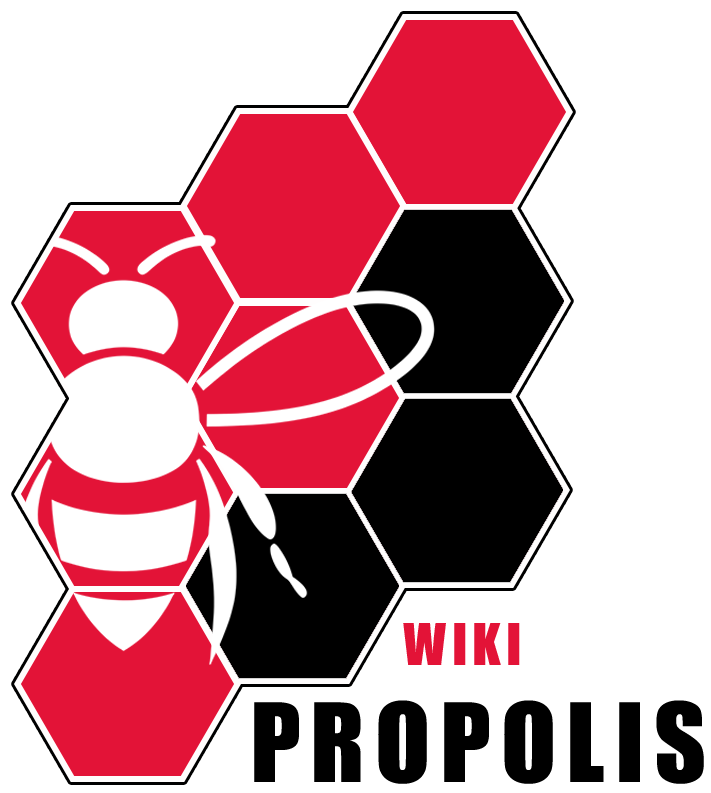Hive
**Hive** is an [open-source](/wiki/Open-Source) [blockchain-based](/wiki/Blockchain) ecosystem hosting a social media platform, tens of [Dapps](/wiki/Decentralized-Application) and hundreds of [L2 tokens](/wiki/L2-Token). Launched as a community-governed [[Hard Fork]] of the [STEEM blockchain](/wiki/Steem) in 2020, HIVE shares fundamental principles with its predecessor: a novel approach to content creation, [[curation]] , and monetization.[1] Participants are incentivized with [HIVE tokens](/wiki/Hive-Cryptocurrency) for their contributions, including posting, commenting, and [voting](/wiki/Upvote) on content. The platform employs a [Delegated Proof of Stake (DPoS](/wiki/Delegated-Proof-Of-Stake)) consensus mechanism for [[transaction]] validation and [block creation](/wiki/Block). The ecosystem is purely meritocratic, with HIVE vested in [HIVE Power (HP)](/wiki/Hive-Power) representing the token of merit. Besides of HIVE and HIVE Power, the ecosystem hosts [HIVE Backed Dollars](/wiki/Hive-Backed-Dollar) as its native token.
## Features
### Transactions
Thanks to the DPoS consensus, Hive has 3-second block times with transactions confirmed within seconds due to one-block irreversibility.[2] Transactions are free of any monetary fees. Since [[Hard Fork 20]], each of them consumes rechargeable [[Resource Credits]] though. Similarly to other blockchains, RC fees vary depending on the current network usage. The RC available to individual accounts is directly proportional to their Hive Power.[3] As of May 2024, around 10-20 HP is usually sufficient for any user to participate on the blockchain with no limitations experinced
### Governance Model
Hive is not governed by a central authority like enterprises or other legal entities are. Every account is eligible to participate in the community governance based on its Hive Power stake. The common governance-related acts are:
* Voting for [Witnesses](/wiki/Witness)
* Supporting [DHF proposals](/wiki/Dhf-Proposal)
Most governance actions are merely parametric adjustments (such as setting the [current price](/wiki/Price-Feed) of HIVE, new [account creation fee](/wiki/Account-Creation), or the [HBD savings](/wiki/Savings) interest rate) and are taken care of by Witnesses. However, the community may agree on a major shift that requires changes in the core protocol of the blockchain, which is called a Hard Fork.
### Immutable blogosphere
Steem, the direct predecessor of Hive, was launched in April 2016 as a pioneering attempt to diminish the role of conventional social media and transfer ownership of the data and content to the users, an approach now referred to as [[web3]]. Steem aimed to provide a decentralized censorship-resistant platform for users to express themselves freely, and reward the contributors with STEEM tokens and Steem Backed Dollars.[4][5]
However, there are proven attempts to censor content on Steem’s primary front-end steemit.com upon the takeover of [Steemit, Inc.](/wiki/Steemit-Inc) by TRON-Foundation Ltd.[6] Censorship was one of the keen concerns which eventually led to launching Hive in 2020.
Unlike Steem with a single dominant front-end, Hive offers a wide scale of independent interfaces to interact with blockchain. The most frequently used ones as of April 2024 are:[7]
* [[3Speak]]
* [[Actifit]]
* [[dBuzz]]
* [[Ecency]]
* [Hive.Blog](/wiki/Hive-Blog)
* [[Inleo]]
* [[Liketu]]
* [[Peakd]]
### Reward System
Hive accommodates a wide range of content formats from [[microblogging]] to [vloging](/wiki/Vlog). One of the core features of Hive is the reward system, which incentivizes content creation and curation through cryptocurrency rewards. Users who contribute content perceived as valuable by other users receive rewards in proportion to the upvotes the content receives within 7 days of publication.[1] The rewards vary from an equivalent of $0.02 (the Dust Threshold)[8] to several hundred dollars per post or comment. The author commonly receives 50% of the total payout their content generates. However, Beneficiaries who receive a portion of the author's reward can be set upon publishing the content.
The other half of the payout is distributed proportionally among the upvoters, commonly called curators. This measurement rewards HP holders and incentivizes active participation. Since opinions on what constitutes quality content are very individual, thematic [communities](/wiki/Community) and [curating initiatives](/wiki/Curating-Initiative) have emerged to support and promote content that their members find interesting and of high quality.
## Hive-based Dapps
The fast feeless transactions in combination with a simple address system (Hive [wallet address](/wiki/Wallet) can be a common username), and the ability to host L2 tokens including [NFTs](/wiki/Nft), make Hive attractive for non-content-related dapps, mainly games. Most Hive dapps rely on [[Hive Keychain]], a mobile-friendly Hive Wallet [[browser extension]] that reports over 100,000 users as of May 2024. L2 tokens are commonly [minted](/wiki/Token-Minting) and traded on a smart contract [side-chain](/wiki/Side-Chain) platform [[Hive Engine]].
## Disputes
When the Hive blockchain forked from Steem in March 2020, an [[airdrop]] was conducted to distribute HIVE tokens to existing Steem users. However, not all Steem users received this airdrop. Users who were associated with TRON-Foundation Ltd., which had acquired Steem and gained control of a significant portion of the total STEEM supply, were blacklisted and did not receive the HIVE token airdrop.[9]
The blacklist was presented as a community decision that had been discussed.[10] Several users were later removed from the blacklist and airdropped additionally.[11]
## Further Reading
* [List of Hive gaming dapps](/wiki/Hive-Gaming-Dapps)
* [List of Hive non-gaming dapps](/wiki/Hive-Non-Gaming-Dapps)
* [[Hive timeline]]
## References
1. ↑ ↑ (2020) HIVE Whitepaper https://hive.io/whitepaper.pdf
2. ↑ Hive.io https://hive.io/about/
3. ↑ Hive Developer Portal https://developers.hive.io/tutorials-recipes/calculate_rc_recipe.html
4. ↑ Steem Bluepaper https://steem.com/steem-bluepaper.pdf
5. ↑ Steem Whitepaper https://steem.com/SteemWhitePaper.pdf
6. ↑ Samuel Haig (2020) Cointelegraph https://cointelegraph.com/news/justin-suns-steemit-accused-of-censoring-hive-related-content
7. ↑ @dalz (2024) A Look at the Top Hive Frontends https://hive.blog/hive-133987/@dalz/a-look-at-the-top-hive-frontends-or-april-2024
8. ↑ https://developers.hive.io/tutorials-recipes/understanding-configuration-values.html
9. ↑ Stephen O'Neil (2020) Cointelegraph https://cointelegraph.com/news/steem-community-resists-takeover-hard-fork-launches-hive-network
10. ↑ @lukestokes (2020) How Steem Became Hive https://hive.blog/steem/@lukestokes/how-steem-became-hive
11. ↑ @hiveio (2020) Community Discussion and Updates: Hive Airdrop Exclusion List and Code Corrections, Core Developer Meetings https://hive.blog/hiveblockchain/@hiveio/community-discussion-updates-hive-airdrop-exclusion-core-developer-meetings
## Related Articles
[[Hard fork]]
[[Curation]]
[[Transaction]]
[[Hard fork 20]]
[[Resource credits]]
[[Web3]]
[[3speak]]
[[Actifit]]
[[Dbuzz]]
[[Ecency]]
[[Inleo]]
[[Liketu]]
[[Peakd]]
[[Microblogging]]
[[Hive keychain]]
[[Browser extension]]
[[Hive engine]]
[[Airdrop]]
[[Hive timeline]]
Contents
